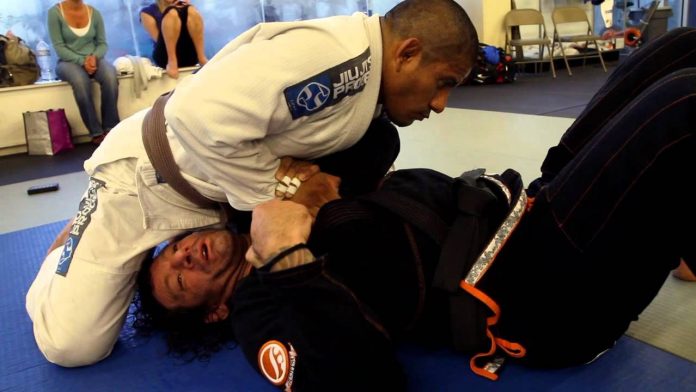
The only thing worse than being stuck in a really bad position in Brazilian Jiu-jitsu is being utterly and completely exhausted. Now imagine that you’re stuck in one of the wort positions the port has to offer and you’re completely drained of energy as well. You might think that most positions in BJJ where you’re on the bottom fit the bill. Still, even from high-pressure positions like the mount, surviving can be a little bit easier than one specific position. Getting trapped there for the first time is going to get you tired faster than anything else you experience in grappling. Welcome to the North-South position. The, arguably, toughest position in grappling to be in and one of the hardest to escape. Are there any effective North-South escapes to consider or should you just wait for a mistake? Let’s find the answer.
There is something about the North-South position that makes people cringe. Even in the best of circumstances, it is a highly uncomfortable position to be in. That said, having someone on top in No-Gi, sweat dripping from everywhere is a great way of discovering whether you have claustrophobic tendencies. If you do, you’ll start panicking and fidgeting around, ending up exhausted in seconds. Not really the outcome you want. Even if you’re calm, the position is such that you’re natural instincts are only going to get you stuck deeper. The instinctive pushing of your opponent is not one of the North-South escapes you should consider. technical and very patient movements are the only way out.
North-south escapes are going to be an uncomfortable venture. Ending up in the position is the thing you should’ve avoided in the first place. or, in the words of Kurt Osiander, “you f#*$^d up a long time ago”. If you’re at the bottom of North-South, the first aspect of escaping is accepting the discomfort you’re about to be in. Also, be prepared to experience that discomfort for a while, until you manage to set up your escapes. With that out of the way, we can look at how exactly you can get out of BJJ’s most despised position.
Stuck In North-South
So, on to the North-South position. Yeah, you’ll have to read a bit more before we get to the actual North-South escapes. Unless you know what the position and its weaknesses are, there’s no point in trying to get out. You’ll just end up thinking they don’t work. This, in turn, will lead to you trying to muscle your way out. Which will get you, as we previously saw, exhausted.
The North-South position is a variation of side control, where the opponent is actually on top of your head. More precisely, their belly should be on your head. Their elbows must go under your elbows, or you’ll be able to use frames. Furthermore, they usually keep their knees tucked in, creating a tight position around your head and shoulders. In certain situations, they might be sprawled out, exerting lots of pressure.
Escaping the position won’t happen unless you manage to get your structure in order. This means defending first, before looking to get out and even counter, should the opportunity arise.

Defending
By defending the North-South position, I mean denying your opponent the controls they need to proceed to attack. The first step in any defense strategy would be to prevent the position beforehand. However, as we said, the goal today is to look at North-South escapes once we’re neck deep.
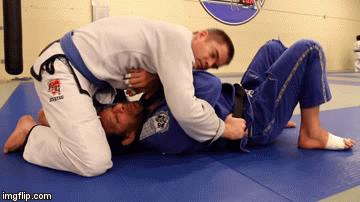
When defending the North-South position, creating space between you and your opponent is everything. Without space, you’ll be in a hand fighting battle which probably won’t end well for you. Once you have space, do an Upa. Now, you can actually move and cause all kinds of trouble to your opponent. Space is the foundation of all North-South defenses, that can eventually lead into escapes or even counters.
North-South Escapes
Actually escaping the position is going to require some timing and technique in addition to creating space and denying control. With Noth-South escapes, you can either roll out or roll your opponent over.
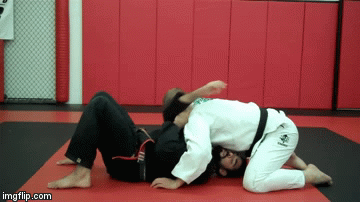
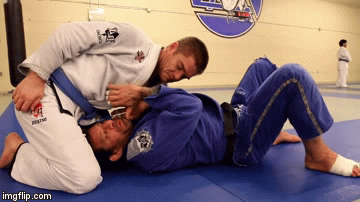
Counter Attacking
Countering from the bottom of the North-South position is only something for advanced students. Namely, it’s really easy to make a mistake and end up stuck even worse. The best way is to use any of the North-South escapes above. However, in certain cases, where the opponent is also savvy about what’s going on, you’ll need different options.
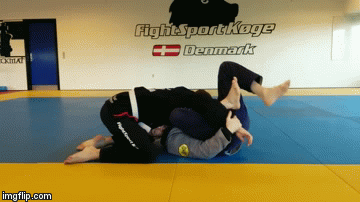
Finsihignthe Squirrel lock is not hard from there. You can either get a tap right there or roll the opponent over and finish from top side control.


![Darce Choke Encyclopedia – Origins, Mechanics and Variations [2025] BJJ, choke, Brabo, BJJ Darce Choke, D'arce Choke, Darce BJJ Choke](https://bjj-world.com/wp-content/uploads/2017/11/JungPoirierLeeYahoo-218x150.jpg)









![Countering with Crab Ride Anthony Budion DVD Review [2025] Countering with Crab Ride Anthony Budion DVD Review](https://bjj-world.com/wp-content/uploads/2025/03/countering-with-crab-ride-anthony-budion-dvd-review-218x150.png)
![Closet Closed Guard Craig Jones DVD Review [2025] Closet Closed Guard Craig Jones DVD Review](https://bjj-world.com/wp-content/uploads/2025/03/closet-closed-guard-craig-jones-dvd-review-218x150.png)
![Xanadu Back Takes Levi Jones-Leary DVD Review [2025] Xanadu Back Takes Levi Jones-Leary DVD Review](https://bjj-world.com/wp-content/uploads/2025/03/xanadu-back-takes-levi-jones-leary-dvd-review-218x150.png)

![No-Gi Grapplers Guide To Front Headlock Joel Bane DVD Review [2025] No-Gi Grapplers Guide To Front Headlock Joel Bane DVD Review](https://bjj-world.com/wp-content/uploads/2025/03/no-gi-front-headlock-joel-bane-dvd-review-218x150.png)

![Wrestling For Jiu-Jitsu Shawn Williams DVD Review [2025] Wrestling For Jiu-Jitsu Shawn Williams DVD Review](https://bjj-world.com/wp-content/uploads/2025/01/wrestling-for-jiu-jitsu-shawn-williams-dvd-review-324x235.png)

![Slip N Slide Into Victory Julián Espinosa DVD Review [2025] Slip N Slide Into Victory Julián Espinosa DVD Review](https://bjj-world.com/wp-content/uploads/2025/01/slip-n-slide-into-victory-julian-espinosa-dvd-review-100x70.png)
![Miko Hytonen Lapel Chokes From Everywhere DVD Review [2024] Miko Hytonen Lapel Chokes From Everywhere DVD Review](https://bjj-world.com/wp-content/uploads/2024/10/miko-hytonen-lapel-chokes-from-everywhere-dvd-review-100x70.png)


![Standing Leg Entries Alex West DVD Review [2025] Standing Leg Entries Alex West DVD Review](https://bjj-world.com/wp-content/uploads/2025/03/standing-leg-entries-alex-west-dvd-review-100x70.png)

![Shotgun Aoki Locks Mateusz Szczecinski DVD Review [2025] Shotgun Aoki Locks Mateusz Szczecinski DVD Review](https://bjj-world.com/wp-content/uploads/2025/03/shotgun-aoki-locks-mateusz-szczecinski-dvd-review-100x70.png)
![Back Hacks Yigit Haney BJJ DVD Review [2025] Back Hacks Yigit Haney BJJ DVD Review](https://bjj-world.com/wp-content/uploads/2024/12/back-hacks-yigit-haney-bjj-dvd-review-100x70.png)

![Woj Lock the World Chris Wojcik Ankle Locks DVD Review [2024] Woj Lock the World Chris Wojcik Ankle Locks DVD Review](https://bjj-world.com/wp-content/uploads/2024/12/woj-lock-the-world-chris-wojcik-dvd-review-100x70.png)

![The Rack Kyle Watson BJJ DVD Review [2025] The Rack Kyle Watson BJJ DVD Review](https://bjj-world.com/wp-content/uploads/2024/12/the-rack-kyle-watson-bjj-dvd-review-100x70.png)

![Master The Move The American Lock John Danaher DVD Review [2024] Master The Move The American Lock John Danaher DVD Review](https://bjj-world.com/wp-content/uploads/2024/12/the-american-lock-john-danaher-dvd-review-100x70.png)

![Closed Guard Reintroduced Adam Wardzinski DVD Review [2025] Closed Guard Reintroduced Adam Wardzinski DVD Review](https://bjj-world.com/wp-content/uploads/2025/01/closed-guard-reintroduced-adam-wardzinski-dvd-review-100x70.png)


![360 Degrees Guard Retention Thiago Abud DVD Review [2024] 360 Degrees Guard Retention Thiago Abud DVD Review](https://bjj-world.com/wp-content/uploads/2024/10/360-degrees-guard-retention-thiago-abud-dvd-review-100x70.png)
![Reverse Armlock Magid Hage DVD Review [2024] Reverse Armlock Magid Hage DVD Review](https://bjj-world.com/wp-content/uploads/2024/12/reverse-armlock-magid-hage-dvd-review-100x70.png)
![Shoulder Lock Mastery Zach Green DVD Review [2025] Shoulder Lock Mastery Zach Green DVD Review](https://bjj-world.com/wp-content/uploads/2024/12/shoulder-lock-mastery-zach-green-dvd-review-100x70.png)
![Old School BJJ Ricardo Cavalcanti Fundamentals DVD Review [2024] Old School BJJ Ricardo Cavalcanti Fundamentals DVD Review](https://bjj-world.com/wp-content/uploads/2024/09/old-school-bjj-ricardo-cavalcanti-dvd-preview-100x70.png)


![How To Knee Cut Junny Ocasio BJJ DVD Review [2025] How To Knee Cut Junny Ocasio BJJ DVD Review](https://bjj-world.com/wp-content/uploads/2025/02/how-to-knee-cut-junny-ocasio-bjj-dvd-review-100x70.png)
![Higher Tripod Passing Craig Jones DVD Review [2025] Higher Tripod Passing Craig Jones DVD Review](https://bjj-world.com/wp-content/uploads/2025/02/higher-tripod-passing-craig-jones-dvd-review-100x70.png)
![Roger Gracie Closed Guard System DVD Review [2025] Roger Gracie Closed Guard System DVD Review](https://bjj-world.com/wp-content/uploads/2025/01/roger-gracie-closed-guard-system-dvd-review-100x70.png)